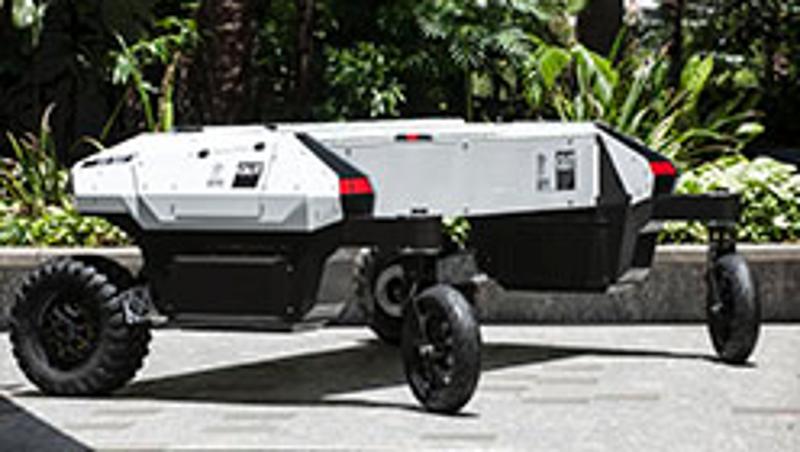
Scientists and industry representatives at the forefront of the next agricultural machine age are meeting at QUT this week for the first scientific workshop of the National University Network Precision Agriculture Systems (March 10-12).
QUT robotics Professor Tristan Perez said since the 1960s, increased use of agrochemicals, significant advances in crop and animal genetics, agricultural mechanisation and improved management practices have been at the core of increased productivity and would continue to provide future incremental improvements.
"But today, data analytics and robotics are transforming industries such as mining, manufacturing, and health," Professor Perez said.
"We are starting to see automation in agriculture for single processes such as animal and crop drone remote monitoring, robotic weed management, autonomous irrigation.
"However, we envisage that the integration of these technologies together with a systems view of the farming enterprise will trigger the next wave of productive innovation in agriculture.
"Farmers will have to access data and technologies from which to extract information that will assist in management decisions."
Professor Perez said the agricultural landscape would rapidly change due to low-cost and portable ICT infrastructure and robotics.
"The farm of the future will involve multiple lightweight, small, autonomous, energy efficient machines (AgBots) operating collectively to weed, fertilise and control pest and diseases, while collecting vasts amount of data to enable better management decision making," Professor Perez said.
"There is enormous potential for AgBots to be combined with sensor networks and drones to provide a farmer with large amounts of data, which when can be combined with mathematical models and novel statistical techniques (big data analytics) to extract key information for management decisions—not only on when to apply herbicides, pesticides and fertilizers but how much to use."
Professor Perez said weed and pest management in crops was a serious problem for farmers and replacing large, expensive, single tractors with a team of more cost effective robots that could weed on the spot and perform other farming operations 24 hours a day.
He said there was no reason why agricultural robots would be confined to broadacre and horticulture farming crops—AgBots could also be of great value within the livestock industry.
He said with the world population projected to increase from seven billion plus in 2015 to nearly nine billion by 2050, it was essential to find ways to increase yield and maintaining the status quo was no longer an option.
"Farmers are keen to explore this new agricultural frontier which has the potential to ensure their long-term sustainability by enabling them to deliver high-premium produce," Professor Perez said.
QUT's AgBot II prototype is 3 metres wide, 2 metres long and 1.4 metres high with all dimensions adjustable. Equipped with cameras, sensors and software AgBot is designed to work in autonomous groups to navigate, detect and classify weeds and manage them either chemically or mechanically as well as apply fertilizer for site specific crop management. AgBot II is currently static but will be engaging in field trials tin June 2015.
He said researchers from nine Australian universities as well as farmers and industry representatives would attend the National University Network for Precision Agriculture Systems Science-Industry workshop at QUT from 10 to 12 March. At this workshop, key research and development projects will be discussed that could serve as a springboard for agriculture into the digital age.
Media contact: Rose Trapnell, QUT media team leader, 07 3138 2361 or 0407 585 901, rose.trapnell@qut.edu.au




